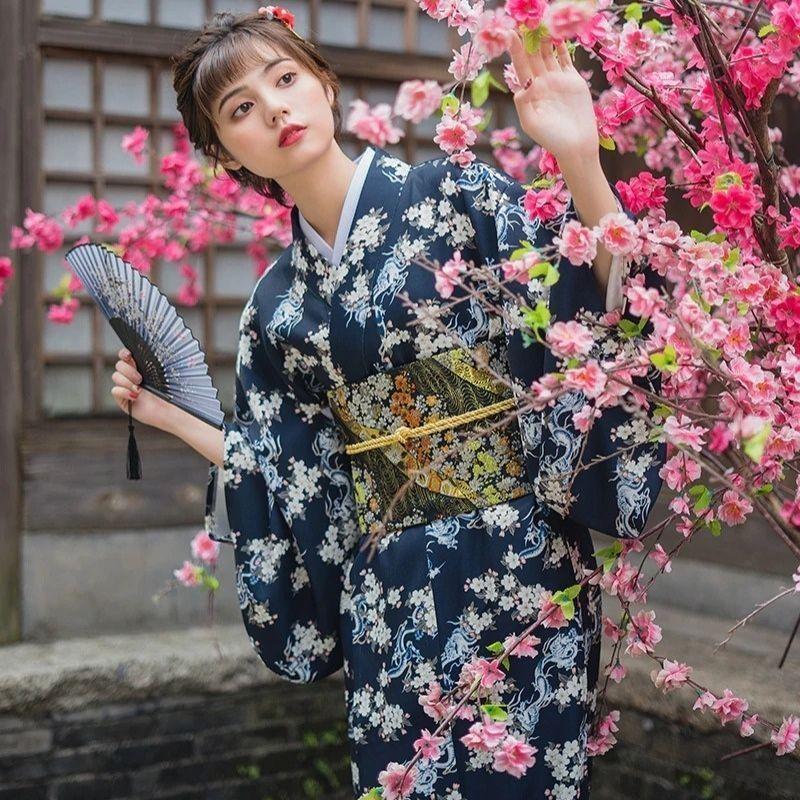Below is a very brief description of the various silk kimono styles. Most formal items are listed first, followed by the least formal.
- Kakeshita-A bridal kimono with a little puffed hem is called a kakeshita. The bride may choose to wear a colorful kakeshita or a shiro kakeshita, which is entirely white.
- Uchikake- A kimono for a wedding with a thickly cushioned hem. Frequently highly vibrant and flamboyant. An uchikake is typically worn atop a bride’s shiro kakeshita after the wedding.
- Hikizuri- A lengthy kimono with a cushioned hemline for dances.
- Furisode- The furisode represents the most formal kimono for a single woman. Its long, hanging sleeves are a defining feature.
- Houmongi- This kimono remains quite formal even if it is a little less so than the iromuji. Both the left shoulder and the bottom hemline include the houmongi pattern. The kimono’s folds are covered in patterns.
- Tsukesage-The only pattern on the tsukesage, like the houmongi, is on the left sleeve and the hemline. The design on a tsukesage is indeed not continual, unlike the houmongi.
- Both Kuro and Iro Muji- The Iro Muji is indeed a plain, single-color kimono. It is about as official as the houmongi and tsukesage if the garment contains crests on the back. It’s less formal if it lacks crests. The burial kimono is known as the Kuro Muji and is all black.
- Komon- The most informal kimono is the komon. The complete kimono is covered in a design that constantly repeats. The design could be somewhat modest or perhaps huge.
- Yukata- A yukata is a cotton garment that is constructed similarly to a kimono. This can only be worn in the spring and summertime because it is so informal. The yukata, which was inspired by the bathrobe worn in thermal springs, has grown into a huge hit at major festivals.

The precise classification system that applies to women’s kimonos does not apply to men’s kimonos. However, formality still comes in a variety of forms and degrees. Because of the availability of thinner kimonos for men, the material and pattern will frequently have a significantly greater effect on the formality. A silky silk fabric, for instance, would be more professional than a coarse pongee weaving, which is more official than a cotton fabric with a kusuri weave.
- The most formal kimono for men is this one. A black kimono with 5 chevrons, a black haori, as well as a hakama make up this ensemble. Tabi and zori are always paired with men’s kimonos.
- If the kimono plus haori isn’t both black, then the ensemble is becoming less professional.
- Much less formal is a kimono with just a haori.
- Men can wear kimonos in the most informal style by wearing just a simple outfit.\
- The cotton yukata represents the most informal outfit a guy can do, just like it is for women. This is the sole dress that allows you to utilize wooden geta and also no tabi, just like with women.


